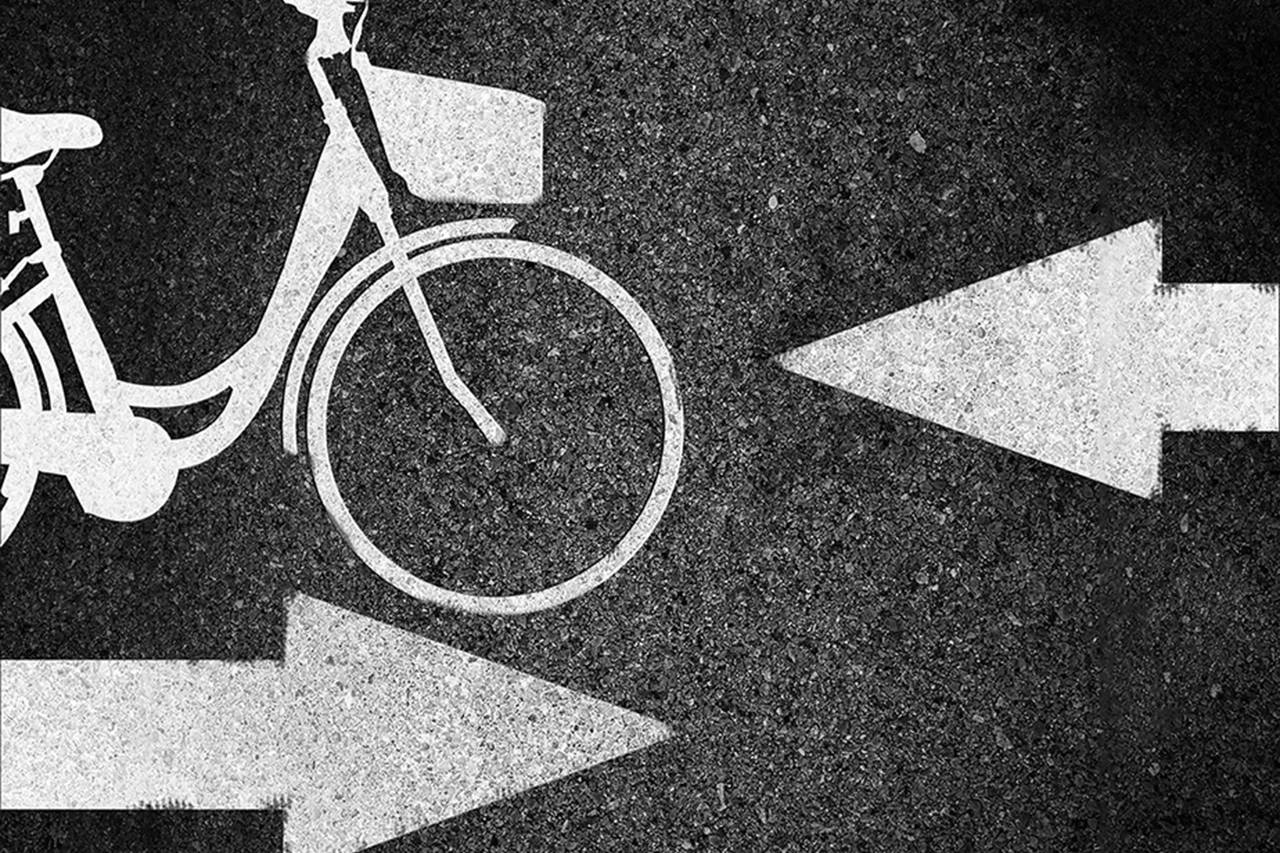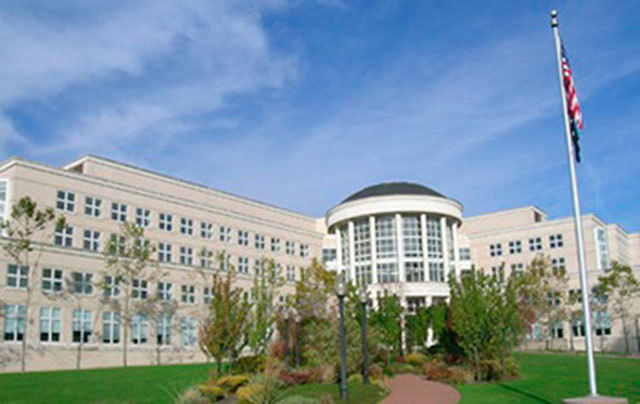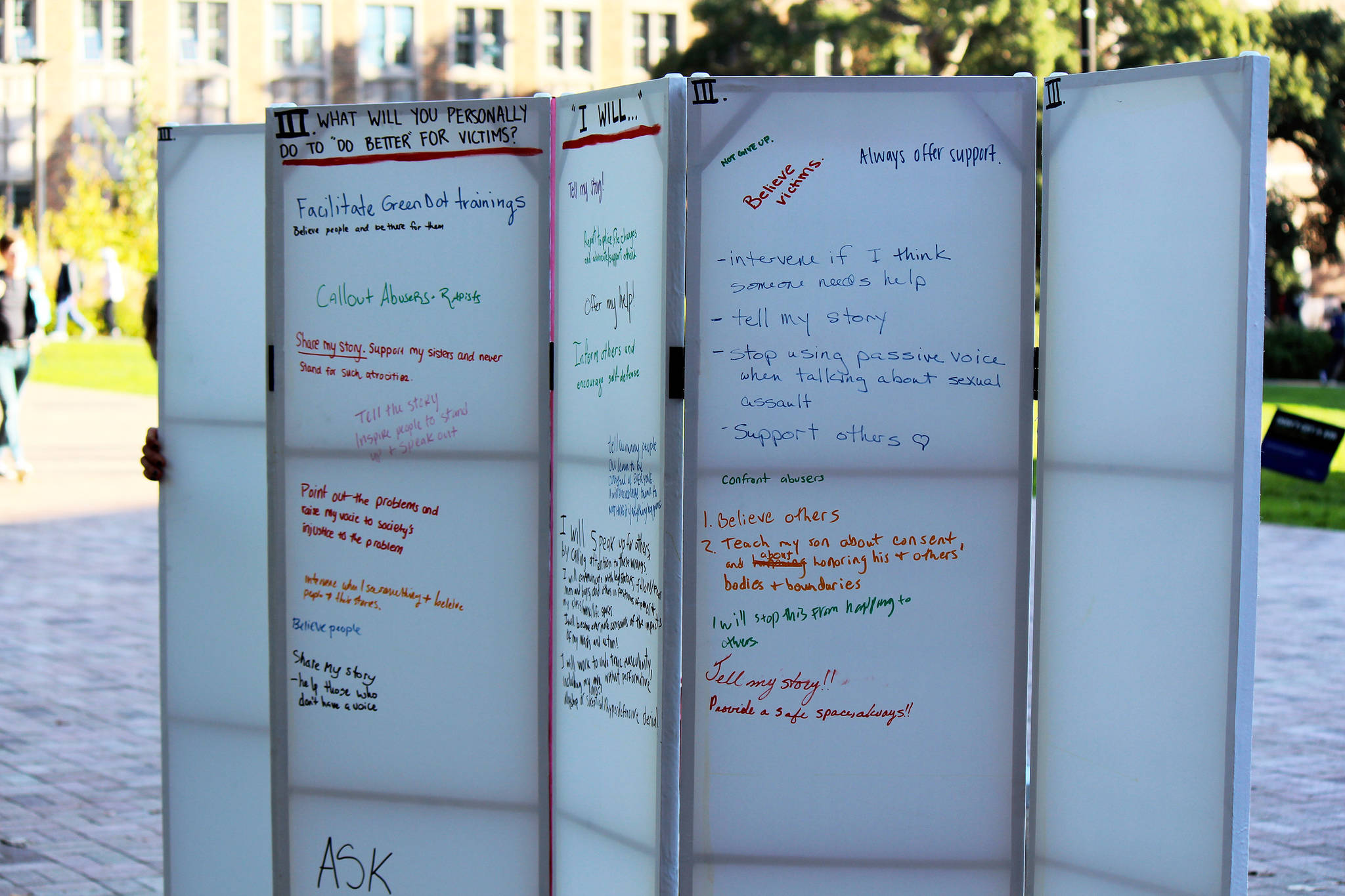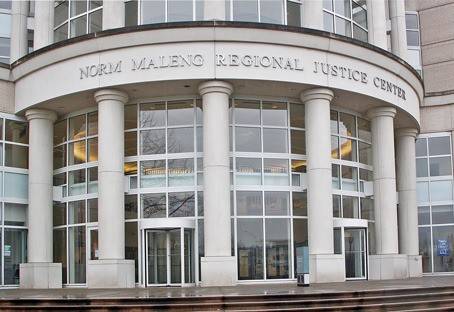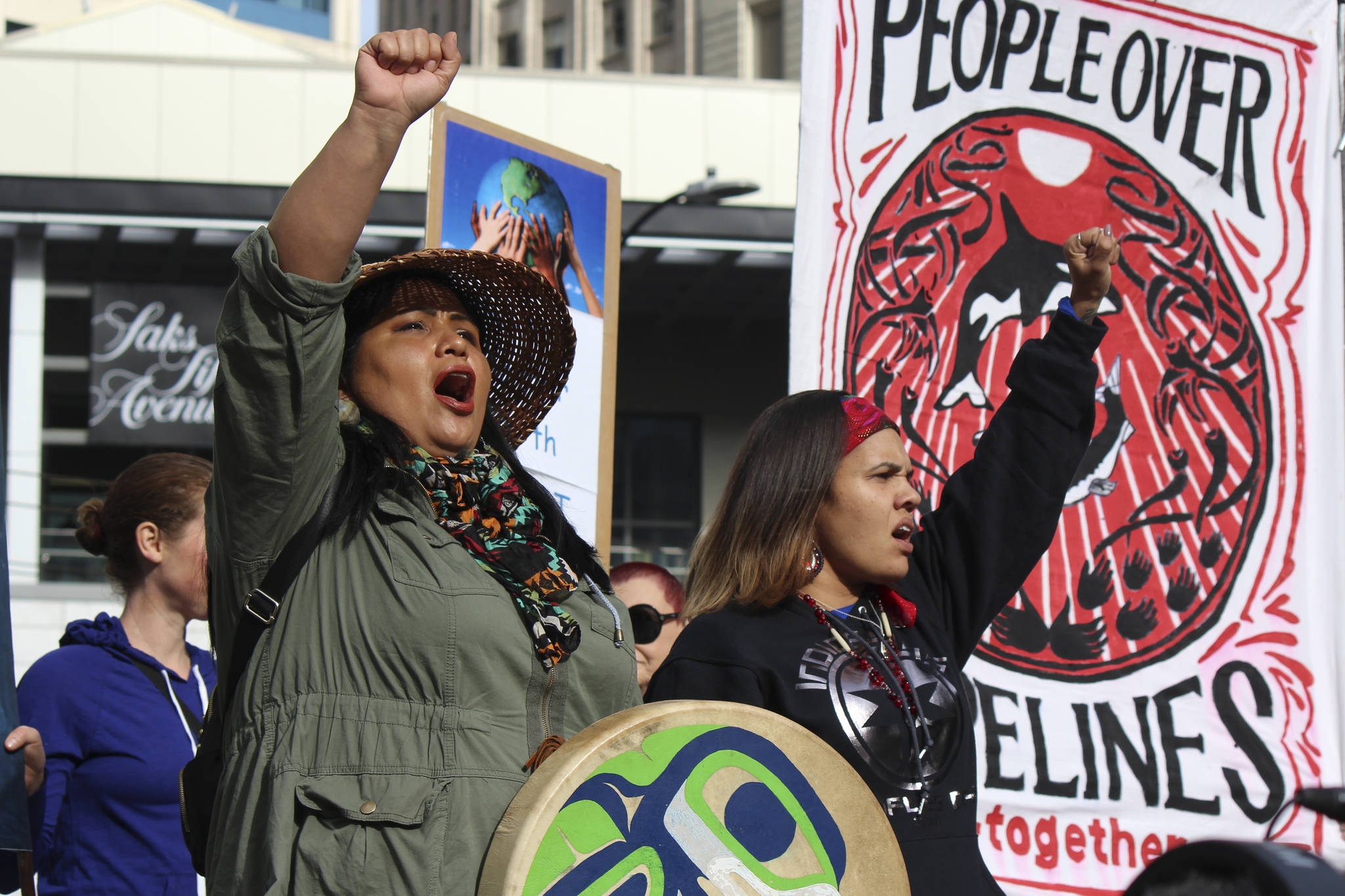It was a warm Friday morning in late July when Salim Alam set off for work from Mercer Island to his office in downtown Seattle. He has lived in the region for 25 years, working for various tech companies, and spent two years bike-commuting to Bellevue; he knows a thing or two about bikes. That morning, though, was just his second time pedaling downtown. “I’ve done bike-safety classes and stuff like that; I’m not an unprepared rider,” he says. But “Seattle has unique challenges and risks… . It’s very easy to make a small decision that cascades into a much larger decision.”
That small decision—which many, many cyclists make every single day—was to try to pass a bus stopped in front of him, fielding a line of onboarding passengers. That worked out all right; it was when he tried to get back into the right lane that things didn’t go so well. He’d noticed those ominous streetcar tracks, but with so many cars packed in behind him, “I didn’t have the option of making an emergency stop.” He tried to hit the tracks on a right angle. “That didn’t work.” The track grabbed his wheel, threw him off the bike, and slammed him on the ground on his head and one shoulder, snapping his collarbone and heavily bruising his ribs, hips, and knees. Somehow he managed to get himself to the curb. He’s not quite sure how. “I was just in shock. I knew I was hurt, I just didn’t know the extent of what the injury was.”
A passerby called 911, and he ended up in an ambulance headed to the emergency room at Harborview, where he was treated by Dr. Alex Pulst-Korenberg. The doctor told him that she’d helped many cyclists who’d fallen on the streetcar tracks, and that she was pretty sure she didn’t know anyone who biked in Seattle who hadn’t crashed at least once on those tracks. Pulst-Korenberg later confirmed this report via e-mail, adding that in terms of bike safety in Seattle, “There is room for improvement!”
“It was of course a very traumatic thing to have to go through that,” Alam says. “The thing that makes me feel worse is, for the next person, the exact same thing is gonna happen.”
Alam wears a sling now, and takes the bus. But he doesn’t intend to stop biking. “I definitely know I’ll get back on my bike when I’m able to,” he says. But “it makes me think twice—three times—about biking in Seattle.”
Riding a bike in a city—any city crammed with cars, buses, pedestrians, and traffic snarls of all kinds—can freak people out. In Seattle, which now officially boasts the most cars per capita of any densely populated major city in the U.S., a lot of the general sentiment, routinely confirmed both by people who ride bikes and those who choose not to, centers on fear. The number-one reason more people don’t want to bike in Seattle: a real, visceral dread of some kind of crash—whether that’s flipping on the streetcar tracks, getting hit by a car, or being flung to the ground in an effort to avoid some other obstacle.
“Oh, yeah, by far the biggest barrier to people bicycling in Seattle is not feeling safe on the road,” says Kelsey Mesher, Puget Sound Policy Manager for the nonprofit Cascade Bicycle Club. Mesher says her entire job is to “make bicycling safer and more accessible for people” through policy, advocacy, and education. Cascade knows people are freaked out by riding in Seattle because it’s done surveys on the issue, and “doing this work, I hear that all the time as well.”
Tom Fucoloro, an avid cyclist who has covered bike issues and advocated for better bike policies in Seattle for years as the creator and editor of the Seattle Bike Blog, says “that is the number-one reason people don’t bike more: They don’t want to mix with car traffic.” That’s a justifiable concern, he says. “I can’t sit there and tell people that they shouldn’t think that way. That’s totally valid. It’s not a very comfortable thing to do! There are a lot of people, including myself, who are willing to do that. And the benefits do outweigh the fears. But that doesn’t mean we don’t get scared, sometimes.”
So far, Fucoloro says he hasn’t been in a major bike accident, in part because he cycles very defensively—always expecting a bus driver not to see him or a car to run a red light or make a sudden turn. “But I know a lot of it is luck. There are a lot of people who do all the right things. And they still get hit anyway. Part of it is, you know, just … biking mixed with heavy car traffic, it just doesn’t work. You’ve got to have separation. People are going to make mistakes.”
Yet the number of people riding bikes in Seattle is likely to keep increasing. Cyclist numbers jumped 14.5 percent between 2014 and 2015, according to city data. And if traffic continues to be the bane of every Seattleite’s existence, and if people keep moving here in droves—right now, for instance, there are more than 7,000 local job ads posted by Amazon alone—it seems clear that public transit will not be able to keep up. Nor, certainly, will cars. If you’re not sure, just visit Mercer Street in South Lake Union at about 3 p.m. on a Friday afternoon. “It’s inevitable that the percentage of people cycling is just gonna continue to rise” in Seattle, says Andrew Means, a longtime Seattle resident and cyclist who’s been hit twice by drivers who didn’t see him. “I think it’s a matter of time.”
If a suite of tech startups have their way, that time is now.
Over the past month, hundreds of new bikes have populated Seattle streets and sidewalks. If you spend any time in the city, you’ve seen them. So far either bright orange, green, or yellow, these bikes aren’t the result of an influx of riders, but rather of competing bike-share companies hoping to spark one. And more are on the way. In September, if the four companies that already have or are about to finalize their permits with the city—Spin, LimeBike, Ofo, and VBikes—each debut their allotted maximum, there could be 8,000 new bikes in the city. If and when a handful of other interested companies file their paperwork, September’s numbers could be even greater. And then, in October, there will be no limit to the number of bikes in the bike-shares at all.
The Seattle Department of Transportation launched its bike-share pilot program, developed in close communication with a number of the now-participating companies, on July 7, about six months after the official demise of Pronto, the city’s unsuccessful first attempt at bike share. The pilot runs through the end of December. At that point, SDOT will have to figure out if having that many bike-share companies operating at once is feasible. “We want to use the pilot period to sort out how well the system works when you have more than one competitor,” explains SDOT director Scott Kubly. It is an experiment wholly unique in the United States. “There is nobody in North America doing it this way,” he says.
To bike advocates, nothing is more exciting. The pilot presents a clear possibility that bicycles could become as ubiquitous as pedestrians, and bike-share as easy as (and significantly cheaper than) car-share. And then, they argue, if there are so many bikes around, all emblazoned in garish, neon hues, drivers will be forced to contend with—i.e. be far more aware of—the new, slow-cruising critical mass. The first part of this equation appears to be underway: The first two companies to start in Seattle, Spin and LimeBike, saw more ridership in their first week than Pronto saw in its best week.
Meanwhile, some fear that this deluge is a recipe for disaster. People who don’t ride bikes very often may soon be riding all over a city that is, despite its passionate bike lobby, notorious for its awful traffic, constant rain, steep hills, streetcar tracks, and sometimes-spotty patchwork of bike lanes. Also the subject of much public consternation: The new bike shares, unlike Pronto, don’t come with helmets.
“I have observed a number of people using the bikes, and not one of them was wearing a bike helmet,” wrote Seattle resident Bob Knudson in a letter to The Seattle Times on August 1, echoing sentiments raised again and again in media reports, online commentary, half a dozen interviews for this story, and anxious chatter all over the city. “The implicit message is that helmets are not necessary, and the city is complicit in this message,” Knudson continues. “It’s only a matter of time before a serious head injury or even a fatality occurs as a result of this serious oversight.”
In King County since 1993, and in Seattle since 2003, everyone is legally required to wear a helmet while riding a bike, and police officers have the authority to pull cyclists over and issue $30 tickets if they aren’t. Kubly says that the SDOT permit specifically requires bike-share companies to notify users of the helmet law when they open the app, so at least they’re aware of it. And LimeBike has been giving out free helmets at promotional events and for its early, frequent users. But that’s all. “It’s really sort of incumbent on the rider,” Kubly says.
King County is the only major metropolitan area in the country that has a bike-helmet law for adults. There is sound reasoning behind it: Between 1989 and 1998, there were 35 bicycle-related deaths and 2,003 bicycle-related hospitalizations in King County. Studies by local health researchers in 1989 and 1996 showed that helmets could reduce the number of head injuries by 69 and 85 percent, respectively.
There’s also plenty of anecdotal evidence.
I spoke with half-a-dozen cyclists who have survived major accidents, and every one was either relieved that they were wearing a helmet, or credited it with saving their lives. “If I hadn’t been wearing a helmet, I would have been knocked out,” says Alam, the commuter who wedged his tire in a streetcar track. “The injury would have been much, much worse.” Means, who has been in two accidents in the past two years—both because a car plowed right into him—says “my helmet was destroyed” after the first one. “And it’s entirely possible that the reason I’m talking with you now is because I was wearing a helmet.”
Between the stats and the stories, helmets have been cemented in local residents’ minds as the key to safety on bicycles. Yet, paradoxically, an argument can be made that our focus on helmets actually hurts our overall efforts to make biking safer.
In other parts of the world, especially the oft-invoked bicycle meccas of Germany, the Netherlands, and Denmark (nine out of 10 Danes own a bicycle), very few wear helmets and there are fewer serious crashes than in the U.S. That’s because, in Fucoloro and Mesher’s view, infrastructure—especially protected bike lanes—has a far bigger impact on bike safety than a helmet ever could. “The problem with focusing on helmets is that a helmet might help you once a collision has already happened,” Fucoloro says, but “a helmet does nothing to prevent a collision.” As a result, he argues, the evidence supporting the use of helmets doesn’t do enough to explore the more prevalent and direct causes of dangerous accidents: cars, distracted drivers, and a lack of safe areas to ride a bike. It’s a long, fervent debate, but despite the clear benefit of wearing a helmet if you hit your head, there’s little evidence to suggest that helmet laws actually improve safety. One study found that, at best, helmets make “only a minor contribution to overall cyclist safety.”
Some data even suggests that cars will give cyclists a wider berth if they’re not wearing a helmet. “If you really want the greatest passing distance, you should wobble down the road” looking very inept, the founder of the Bicycle Helmet Safety Institute once told Scientific American. Another researcher found that helmets “may encourage cyclists to take more risks or motorists to take less care when they encounter cyclists.”
The idea that biking is, by definition, dangerous—especially the kind of casual, cruiser-style cycling that bike share encourages—strikes advocates like Fucoloro and Mesher as a product of a car-centric culture. Marketing the absolute need for helmets on bikes is “a horrible sales pitch,” Fucoloro says. He and Mesher both believe that if a helmet law sends the message that biking is a dangerous activity reserved for slick, Spandex-wearing jocks prepping for the Tour de France, “and that makes you less interested in biking, then that’s a public-health negative.”
The belief that inexperienced riders on bike-share bikes are more likely to hurt themselves is also not backed up by data. Until July 2016, there was not a single reported fatality on a bike share anywhere in the country, despite millions of rides and years of service in a dozen major cities (none of which, remember, have helmet laws). By comparison, there were more than 1,000 bicycle deaths in the United States in 2015 and nearly 450,000 injuries, according to data from the CDC. To date, two people have died on a bike-share bike: one in Chicago in 2016, and one in New York this year. The latter followed a reported 43 million trips since the NYC Citi Bike program launched in 2013. Two deaths in about a decade of bike-share programs nationwide, Kubly points out, makes bike share “probably, on a per-trip, per-mile basis, safer than any other form of transportation.”
A study from the Mineta Transportation Institute suggests this may be because most bike-share bikes are heavy, clunky cruisers. I took a few test rides on both a Spin and a LimeBike around downtown and can heartily confirm this. It is very hard to get going very fast on those things. They’re designed to be slow, with limited gears, and to have their riders sit upright; plus, their tires are relatively wide and thick, making navigating ripped-up streets and potholes a little less treacherous. And, according to several experts interviewed for the Mineta study, a lack of experience riding could actually bode well for users: Inexperience tends to make riders more cautious and defensive on the road.
For sure, plenty of skepticism surrounds the new bike-share programs—even among bikers, many of whom say that Seattle’s design fundamentally makes the city unsafe.
“Before a person rides any bike on Seattle’s hilly, transit-confused streets, it would behoove them to know that there are a lot of unsafe routes that weren’t well designed, constructed, or maintained,” says Daniel Ahrendt. A longtime cyclist, Ahrendt caught his front wheel in a streetcar track in May 2015 and was run over by a bus almost as soon as he hit the ground. He ultimately went through months of physical therapy, and his right leg had to undergo reconstructive surgery. Two years later, he can walk, although he’s still in pain a lot of the time, and, understandably, has a certain amount of PTSD. “I don’t bike now, although I would like to be able to again eventually,” he says. “Being on a bike near vehicles and uncertain terrain in this city gives me great anxiety.”
Improving Seattle’s infrastructure is a top priority of the Cascade Bicycle Club. They call it a Basic Bike Network—a connected web of protected bike lanes. Right now, for example, the Second Avenue bike lane, which cuts through downtown, is great—so long as you keep your eye out for pedestrians, pigeons, construction cones, and other obstacles, that is—but it is not yet connected to any other protected bike lanes. “Part of your route, you’re gonna have to go through several blocks of unconnected transition,” Mesher says. “For some people that’s comfortable and fine. For other people that’s incredibly scary. It completely deters them from wanting to ride their bike in the city.”
There are lots of plans for more bike infrastructure development across Seattle, but a lot of those promises have been slow to materialize. Since the Second Avenue lane was completed in 2014, there haven’t been many grand openings for cyclists to celebrate. “We’re so close!” Fucoloro says. “That’s why it’s been so frustrating.”
Kubly defends the city’s efforts, pointing out that in the three years since the Second Avenue protected bike lane was installed, the number of serious bike crashes along that route has dropped from eight per year to five—while ridership has quadrupled. “That means, overall, the crash rate is 86 percent lower,” Kubly says. “The safety benefits of that infrastructure are huge.” In 2015, SDOT calculated approximately 25 serious injury collisions on bicycles in the city of Seattle, down from about 60 in 2009.
But bike infrastructure isn’t only about separating bikes from other forms of transit. It’s also about increasing ridership, period—which in turn could increase safety. And here again, the unsafe-seeming bike shares may paradoxically make biking safer for everyone.
Means explains that, especially after his second run-in with a car, what “really kind of cemented in my mind was just how much cars don’t see cyclists.” Reminding drivers to see cyclists is “kind of like reminding somebody to sit up straight,” he says. “The effort required not to slouch is a constant one, and it actually takes real training to undo those kind of body mechanics.” Same goes for driving, he argues, in a car-focused world: Drivers are trained, largely, to watch out for cars. “I think people in cars… we’re looking for car-shaped things! … I think in general people don’t see cyclists because there just isn’t enough of them.”
A body of research supports this idea. One international team studied communities all over the world and found that when the number of bike riders in a city doubled, the rate of bike/car accidents dropped by a third. An OECD report from 2013 suggests that the more cyclists a country has, the lower its bicycle fatality rate. In New York City, as ridership went up, crashes went down. And in Seattle, too: Despite some minor spikes and falls, bike ridership has been on a steady incline and accidents on a decline. “As more people bike, roads get safer, because drivers become more aware of cyclists,” Mesher says. That’s where these bike shares come in: If there are more bikes on the road, and more slow, bright-colored ones at that, maybe more people will see themselves as cyclists and more drivers will see cyclists. “For this reason I think the new bike shares are fantastic.”
Spin co-founder and CEO Derrick Ko believes it’s all psychological, too, for riders and drivers. “The more people you see riding on the road, the more comfortable you perceive the action to be. Also, people driving are more aware,” he says. “The more people on bikes, the better it is for everyone.”
In March, LimeBike secured $12 million in new funding from a handful of different venture-capital firms and, in May, Spin nabbed $8 million. One of the most recent entrants into Seattle’s bike-share fold, Ofo, is a three-year-old Beijing-based startup, already valued at $2 billion, that recently secured an extra $700 million in venture funding to launch new hubs in cities across the world. “These companies are coming in with unfathomable amounts of money,” Fucoloro says. “That’s interesting.” What we’ve seen so far, he says, is just “a tiny little taste of what is actually planned. I don’t think people fully understand the scale that these companies are thinking this is gonna go. They’re trying to unseat, like, Uber.”
Although a bike ride is not a cab ride (especially on a dark, wet, Seattle night), people who might otherwise take an Uber, Lyft, or cab somewhere could reason that $1 for a 30-minute ride is a way better deal.
Spin, for instance, makes that pretty clear: “We got tired of the traffic and expensive Uber rides just to get around our neighborhood in San Francisco,” its website reads. “So we came up with an idea … ” Ko, before he co-launched the company, worked for Lyft. It is a similar idea, for sure: Open up the app, locate a bike on a map near you, unlock it, and go within minutes. “That’s how all products evolve,” Ko says. “You build upon habits that other companies have established.” And this one makes him feel a bit better about his role in the world. “One of the things that stuck with me at Lyft is that single-occupancy vehicles are terrible for cities and for the environment. Cities should be built for people, not cars.”
And it’s not just the crush of riders brought on by these services that could make riding safer. It’s also in these companies’ best financial interest to have city streets feel comfortable for cyclists—especially new cyclists. Spin, for one, is already working on it. When it launched in Seattle, it also launched the Spin Cities Project, an initiative to fund bike-friendly infrastructure in the cities it’s operating in, which now include South San Francisco, Mountain View, Calif., and Dallas. To that end, Spin has already committed $10,000 to improving bike infrastructure and culture in Seattle. Part of that money, Ko says, is a direct donation to the nonprofit BikeWorks—both a bike shop and a social-justice-oriented advocacy group—and another chunk of it will help fund a collaborative effort among Cascade, Neighborhood Greenways, and the Chinatown/International District Business Improvement Area to speed the creation of protected bike lanes in the International District.
“Ford and GM, they lobbied the country hard to build a freeway system; they saw that as the biggest limit to selling cars: People didn’t have a place to drive,” Fucoloro says. “Now it’s like the weird capitalist reversal of that same power: [Bike-share companies] need the city to make streets safer.”
Of course, there will be accidents. Despite our best intentions, crashes are usually caused by human error—whether we have helmet laws, distracted-driving laws, hordes of new cyclists swarming city thoroughfares, or all three. In Chicago and New York, the cyclists who died on a bike-share bike were hit by a flatbed truck and a charter bus, respectively. “There will be a point at which we have someone in Seattle in a crash on a bike-share bike,” Kubly concedes. “Inevitably, something like that will happen at some point in time. What we want to do is make sure we have as safe of streets as possible, so the crashes that we do have are not severe.”
sbernard@seattleweekly.com
